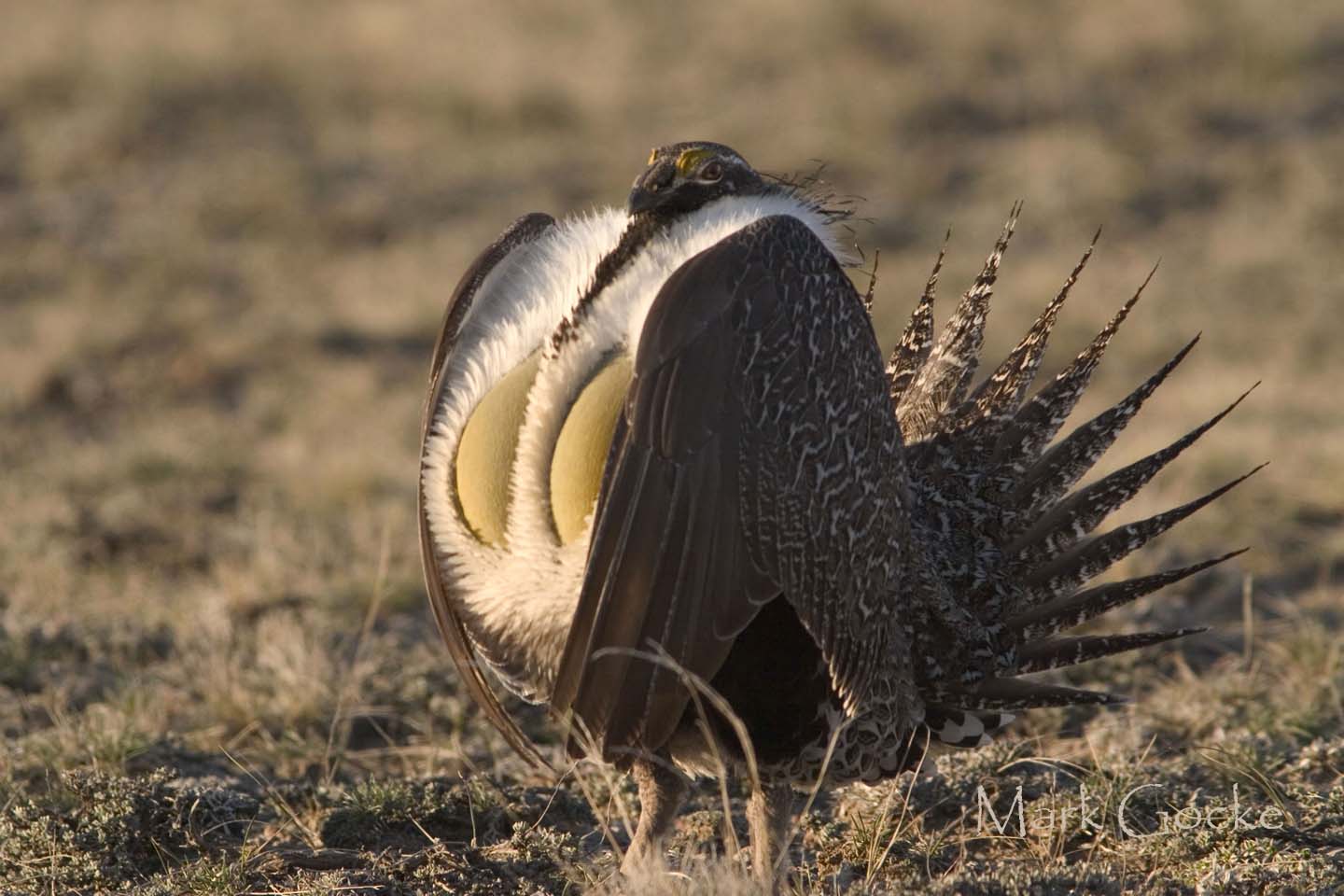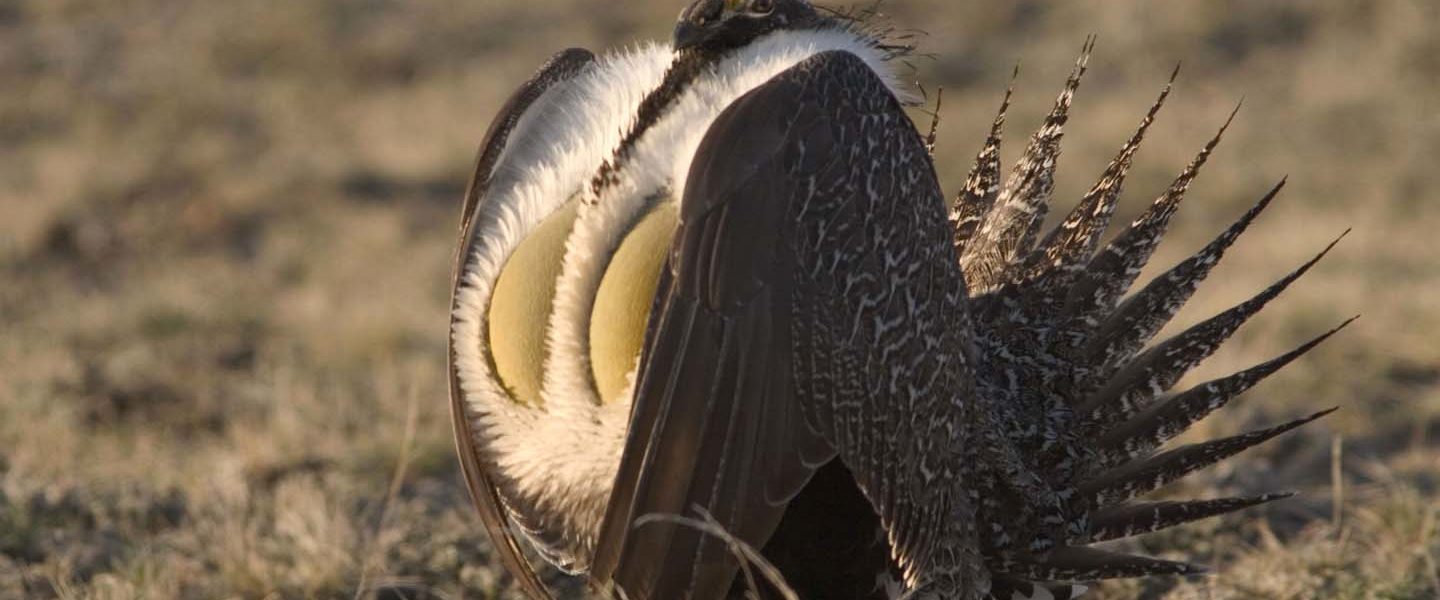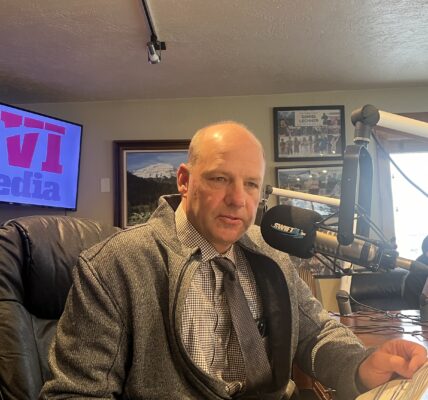
By Jonathan Gallardo
Gillette News Record
Via- Wyoming News Exchange
GILLETTE — Jimmy Mankin’s worried about the future.
The Mankin Ranch, located about 20 miles south of Gillette west of Highway 50, was established in 1939. He has cattle and horses on the land, and this year, thanks to all of the moisture, it’s green as far as the eye can see. In fact, it’s the greenest he can remember since the 1980s.
As he drove around his ranch Thursday morning, looking out at the wide open spaces, he worried about how much longer he could keep it going.
Mankin’s land, as well as the land of many of his neighbors, are in what is proposed to be designated as a sage grouse core area, which would restrict future energy development on the land.
“I’m scared,” he said.
On the south end of his property, there’s a hunting camp. It’s been there since the 1960s and includes a small building where hunters can stay during the fall.
If his ranch is designated as a core area, he’ll have to start downsizing, Mankin said, and the hunting camp would be the first thing to go.
“My dad would be pissed at me if I let this go,” he said. “Today is his birthday.”
Mankin’s 8,000 acres, as well as the tens of thousands of acres on his neighbors’ ranches, are included in what is proposed to be a core area for sage grouse in a map drawn up by the Sage Grouse Implementation Team, a group appointed by the state to look at ways to protect sage grouse.
If their land is designated as a core area, they fear that they’ll lose out on the money that comes in from energy development on their land, which helps offset the cost of ranching.
Mankin has oil wells on his property, and the money from those help pay for fuel and his power bill.
“It helps me survive,” he said.
Those working on the process believe the core area designation, while inconvenient, is still better than the federal government designating the sage grouse as an endangered species.
But it’s the ranchers who are feeling threatened.
“I’m thinking about selling real estate to make ends meet,” Mankin said. “This whole area’s in jeopardy.”
Local sage grouse working groups have been meeting across the state the last several weeks.
The Northeast Wyoming Sage Grouse Local Working Group met Tuesday in Gillette and received an earful from frustrated ranchers who voiced their concerns about government overreach affecting their way of life.
Core areas were “designed to control how much disturbance occurred in those areas to try to protect the birds,” said Laurel Vicklund. They’re based on the amount of sage grouse activity in a particular area.
Priscilla Welles, a landowner in Johnson County and a member of the local working group, owns land that is in a core area. There are increased regulations that come with the core designation, primarily when it comes to future development, she said.
If a company wants to drill an oil well in a core area, it would have to go through a lot of red tape. Alternatively, it could go 500 yards in one direction and drill in an area that’s not designated as core area.
“It’s a little crazy in that sense, and you miss out on your development money, of course,” Welles said. “What it does generally is it puts development on guard, and you will lose some opportunities because of that.”
There are spots on Mankin’s ranch that would be great for oil wells or wind turbines, but if it’s designated as a core area, that development and the revenue from the development won’t happen.
The core areas are a “compromise” designed to “avoid more federal overreach,” Welles’ said.
In 2019, Gov. Mark Gordon signed an executive order on the core areas. He wrote that it is “critical that existing land uses,” especially agricultural activities on private land, continue, and that valid existing rights will be respected.
When it comes to oil and gas development, there’s an average of one well pad per square mile, with “suitable habitat disturbance” not to exceed 5%. For active mining development, it’s limited to one site per square mile. No wind or solar energy development is allowed in core areas.
Now, the process has begun to amend the executive order, and that’s what has Mankin worried. Will the amendments go even further with restrictions, making it more difficult to make a living in agriculture?
“This has ramifications on our livelihood,” he said. “It’s scary.”
What prompted this?
The Bureau of Land Management is considering changing its resource management plan “to account for new scientific information and changing conditions accelerated by the effects of climate change and address continued declines in sage-grouse populations and loss of habitat,” according to its website.
As part of this change, BLM is updating its sage grouse habitat map. In the past, BLM was part of Wyoming’s mapping process and incorporated the state’s sage-grouse core area map into its plan.
Because of limitations set by the National Environmental Policy Act, the BLM is not accepting public comment or stakeholder input at this time.
So Wyoming is putting in work to try to facilitate where it would like the BLM to go, said Campbell County Commission Chair Colleen Faber, who represents local government on the working group.
“The states are getting a little bit anxious, wanting to beat them to the punch,” she said.
Right now, the state is accepting public comment on the proposed revisions.
“Wyoming has a proven track record in sage-grouse management and science,” said Governor Gordon in a press release. “Public participation is essential, will inform my review, help identify areas where we can improve upon what is already working and better calibrate our overall approach.”
A SGIT subcommittee was asked to consider and review new science and data. The recommendations include input from conservation interests, private landowners, energy development officials, local government and state agencies.
Their recommendations have been further informed by a series of meetings with seven Local Sage-grouse Working Groups and interested parties over the past three weeks.
“We don’t want them to develop something out of thin air,” Vicklund said.
“The process we are using is the same process we have used from the inception of this program,” said Bob Budd, chairman of the SGIT, in the press release. “Clearly, with the BLM responding to court decisions, their timeline is contracted, but we will continue to work with our partners and the public to maintain a transparent process that includes adequate opportunity for public comment. It remains our intent to make well-informed decisions that maintain Sage-grouse, their habitats and our economy.”
Much of the frustration from Mankin and other landowners comes from the lack of communication from the state on the issue. They felt blindsided when they found out their ranches would be designated as a core area.
“If somebody’s going to be doing something to your backyard in downtown Gillette, wouldn’t you want to know about it, or at least have something mentioned about it?” Gibb Bell asked. “This is our backyard.”
“It would be nice if they’re going to put us in a core area … to let us know,” said Glen Barlow.
The local working group’s goal is to develop and facilitate conservation plans for sage grouse and their habitats to avoid the need for the endangered species listing.
“If it’s endangered species status, guess what, the federal government can declare eminent domain over your private property,” Welles said. “That’s the scary part about it, this is why we’ve worked for so many years to try to prevent this from happening.”
Listing the sage grouse as an endangered species “is very much in conversation from the federal government still,” Welles said.
“You’re not the enemy, I have accepted that, you’re trying to avoid us getting into an endangered species act,” Mitch Maycock said. “The question is, who drew the map?”
Gillette wildlife biologist Erika Peckham said that the sage grouse numbers in northeast Wyoming have been trending downward, and that a lot of research has been gathered over the years on the bird, including habitat inventory and DNA analysis.
Tim Thomas with Wyoming Game and Fish said that on April 20, the different regions of Wyoming Game and Fish drew up maps based on biological data and submitted those maps to SGIT.
A subcommittee of SGIT took the information and drew up its own map, “which looks quite different from the one we drew,” Thomas said.
Vicklund said the local group hopes to work with individual landowners on this issue. Based on the reception of those who attended the meeting, that collaboration might not happen.
“When you thrust them into a core area and increase their regulations … I know what they’re going to tell you, it’s going to be a one finger sign,” said rancher Don Hamm. “You’re not going to get your cooperation.”
Hamm said ranchers have done a good job of taking care of sage grouse populations for generations without the help of scientists and the government.
“Why are we reinventing the wheel, when these people have done a good job for a number of years?” Hamm asked.
The predator problem
Mankin doesn’t see as many sage grouse as he used to when he was younger. The reason for that, he said, isn’t because of development encroaching on the bird’s habitat. It’s the predators.
Foxes, coyotes, eagles and bobcats all prey on the sage grouse. And over the years, the predator populations have grown.
Gibb Bell said predators have been “a hell of a lot worse” for sage grouse than any development.
“This research and data is gathered, but we don’t see much of it, and we don’t see much change,” he said. “Has anyone considered the drought? Has anybody considered the predator problem?”
“Nobody wants to talk about the predator,” Mankin said.
Instead of putting thousands of acres into a core area, Mankin suggested the state ease into this, creating a small test area where the predator population is actively kept in check to see what happens to the sage grouse numbers.
Faber said she’d like to see landowners be given the opportunity to choose whether they’d like to be in a core area. She also suggested creating a “special designation without restrictions.”
“You’d hate to punish them,” she said. “It’s hard to ask them to put restrictions on themselves and their future income.”
Jan Evans said her family’s been farming for 120 years, and they’ve never had trouble with sage grouse. She pointed out that when it comes to issues like this, the ranchers, who’ve been there for generations, “aren’t given credit” for their conservation efforts.
They’re not given a seat at the table either, she added.
“We’re never involved in the top tier of any of these discussions,” Evans said. “An expert in some government office someplace putting these edicts down, and we try and survive.”
“I think all of us are pretty adamant and pretty passionate about trying to do something to improve the grouse population throughout the state,” Vicklund said.
The last time the local working group was looking at adding core areas, in 2019, letters were sent out to the landowners who would be affected, Faber said. Based on the feedback, the group didn’t move forward with the proposal.
This time, the “process is a little backwards,” Faber said, adding that the state has put together a proposal and is now looking for feedback locally.
Nothing is set in stone at this point. The Wyoming County Commissioners Association is facilitating a meeting with SGIT in Cheyenne on June 29.
On the morning of July 6, SGIT will hold a public meeting in the Lander Community and Convention Center.
On July 7, a new draft map will be completed by the SGIT subcommittee, and by the end of July, the recommendations will go to the governor for him to approve.
Mankin said while he’s willing to work with Game and Fish on sage grouse habitat, “they haven’t come to us.”
“If they’re not willing to work with me, I don’t know if I’m willing to work with them very well,” he said.
He hopes to shed light on the issue. He’s reached out to U.S. Sen. Cynthia Lummis and Rep. Harriet Hageman, and Sen. John Barrasso is next.
“Everybody that put this together doesn’t have any skin in the game,” he said. “There’s no boots on the ground, zero, zip, nada.”
The energy development money is vital for many ranches to continue operating, Mankin said, because there isn’t a lot of money to be made in agriculture, but that was never the point.
“We’re not in it for the money,” he said. “We’re in it for the lifestyle.”





